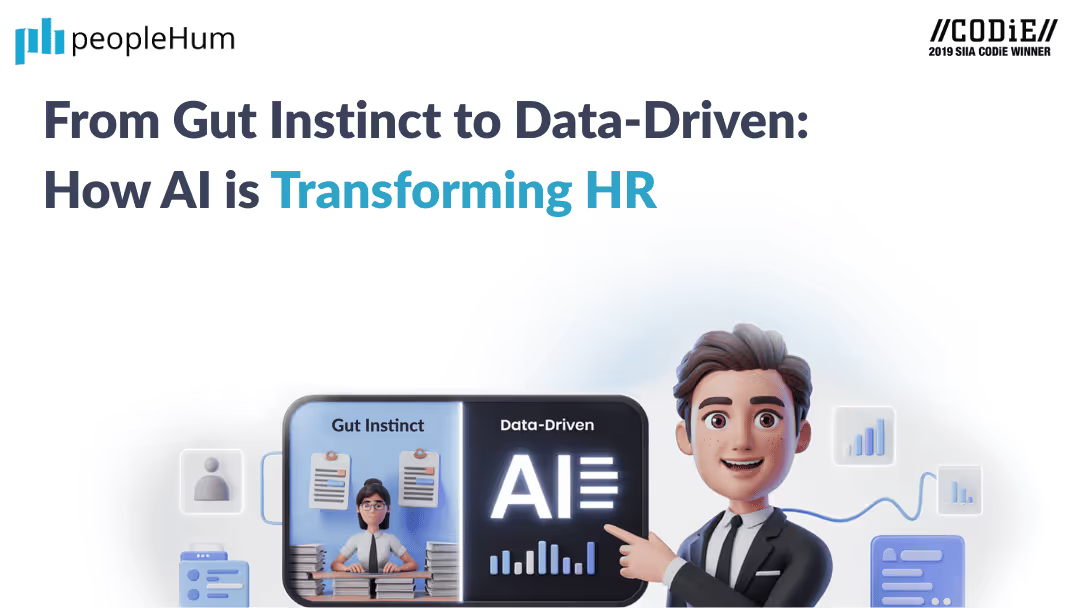Why AI for salary recommendations, and why HR leader should care?
The era of compensation based on gut feeling, outdated spreadsheets, and an employee's ability to self-advocate is ending. For HR leaders, the promise of Artificial Intelligence (AI) to deliver a fairer, faster, and more data-driven salary recommendation is immense. The challenge is: How do you leverage AI's speed and scale without allowing it to automate and amplify historical pay discrimination?
When an AI suggests a salary, both manager and employee will ask: “How did you arrive at that number? Why is this pay different from mine? Is this fair?” If you can’t answer those, you’re building a house of cards. The answer lies in building a stable, ethical framework, i.e a set of non-negotiable guardrails around the AI engine. The aim is not to replace human judgment, but to radically refine it with objective, bias-scrubbed data.
What an AI-driven salary recommendation engine looks like
An AI-driven salary recommendation engine is an indispensable tool in today's HR tech landscape, leveraging machine learning or robust rules-based models to pinpoint a fair and competitive salary or salary band for any role or employee. It's the engine driving data-backed compensation decisions.
The Engine's Fuel: Critical Inputs
To function effectively, the engine ingests and processes crucial, high-quality data:
- Talent Profile: A detailed inventory of an employee's skills and experience.
- Impact & Value: Concrete data on performance contributions and results.
- Role Context: Defining the level, scope, and responsibility of the role.
- Market Reality: Up-to-the-minute market pay benchmarks from external data sources.
- Internal Balance: Analysis of internal equity data to ensure fair pay parity across the organization.
The Mechanics: Modeling & Processing
This rich dataset is then processed through a sophisticated core, which could be:
- A Statistical Regression Model (e.g., linear or logistic).
- An advanced Machine Learning (ML) Model (e.g., decision trees, gradient boosting).
- A sophisticated Rule-Engine incorporating precise business logic and organizational pay policies.
The Deliverable: Actionable Output
The engine's output is not just a number, but a strategic recommendation:
- It delivers a recommended salary range or median figure.
- Crucially, it provides a clear, auditable rationale. For example: "The market median for this role is $100k. Based on the employee’s strong proficiency in skills X and Y, the recommendation falls in the 75th percentile."
Operational Success: Integration & Trust
For maximum impact, the engine is designed for seamless operation:
- Integration: It typically integrates smoothly with existing HRIS and payroll systems.
- Transparency: It maintains a transparent and traceable record of its methodology, ensuring all outputs are auditable and can be reviewed effectively by management, building trust in the compensation process.
This framework transforms salary determination from a subjective process into a strategic, data-backed advantage.
What are the core guardrails to stop it becoming discriminatory?
HR leaders have the ethical, legal and strategic responsibility to ensure that when AI is recommending salaries, you’re not embedding discrimination or unfairness. Let's pull out the most important guardrails.
a) Legal and regulatory compliance
- Implement risk-management programs, conduct annual impact assessments, disclose use of the system, and protect individuals from “algorithmic discrimination”.
- HR must map relevant discrimination laws (age, gender, ethnicity, disability, etc) in their jurisdiction, and ensure the AI system respects these.
b) Bias risk management and monitoring
- The term “algorithmic wage discrimination” has emerged to describe situations where algorithmic systems assign differing wages for the same work based on protected attributes.
- Before you deploy, carry out an impact assessment of the AI model: what data it uses, what factors it overlooks, how it handles protected groups, whether historical pay inequities will be perpetuated. Monitor regularly for model drift, disparate outcomes, unintended consequences.
c) Transparency, explainability and human oversight
- Include human oversight, model explainability (plain language), incident management, and monitoring as key steps.
- Build in a review step where a human (HR/compensation specialist) reviews the recommendation before finalisation. Provide the logic/rationale to affected stakeholders.
d) Data governance and input quality
- Are your inputs fair? Are your skills inventories complete, objective and unbiased (not just “visible high-profile tasks”)? If your historical pay data includes years of under-paying certain groups, and you use that as a baseline, the model will replicate that inequity.
- Ensure your dataset is audited for fairness, cleanse incorrect or biased data, and structure the inputs so they represent value drivers fairly, not just those who shout loudest.
e) Alignment to business ethics & culture
- Even if the model is ‘legal’, if the output feels unfair or opaque to your workforce, you’ll erode trust and damage engagement.
- Involve diverse stakeholders (HR, legal, employee representatives) in the design; communicate openly; Tie the system to your company’s stated values of fairness and inclusion.
What core strategies are required to achieve non-discriminatory pay?
If you’re going to let AI recommend salaries, you want the foundation to be built on what people actually do and can do, not just whether they are seen and heard.
1. Build a Skills-Based Pay Model, Not a Title-Based One
Traditional job titles are static and often carry the baggage of historical pay inequities. A skills-based model decouples pay from the job title and ties it directly to the mastery and application of specific, measurable skills.
- The Input Shift: Instead of training the AI on a problematic label like "Senior Analyst in Pay Grade 5," the model is trained on objective data: "Mastery in Cloud Infrastructure (Skill Value)
- Enhanced Transparency: Employees know exactly what high-value skill they need to acquire for a specific pay increase, fostering trust.
- Bias Mitigation: By focusing only on verifiable, current, and market-valued skills, this model structurally removes the influence of biased historical pay data, which is a major source of perpetuating pay gaps.
2. Integrate 'Invisible Contribution' Scoring
Traditional compensation often rewards visible, high-visibility contributions presentations, big clients and sprint heroics. While long-term improvements, mentoring, cross-team process improvements go unnoticed because they are not tied to headline-grabbing KPIs.
- Holistic contribution score: AI can process data from collaboration tools, internal forums, and mentorship platforms to create a quantifiable score.
- Data points: The system can track metrics like the volume of helpful peer-to-peer answers, quality of peer code reviews, or time spent on cross-functional process improvements.
- Equitable reward: This ensures that quiet competence and team-sustaining effort are rewarded with the same rigor as visible success, mitigating the risk of overlooking essential contributions often made by individuals from underrepresented groups.
3. Create bespoke progression plans
Traditional structures often tie a salary increase to a formal promotion, forcing employees to wait for bureaucratic approval. This 'waiting game' is a major driver of pay inequity and turnover.
- Decouple Pay from Title: Bespoke Progression Plans decouple the salary bump from the job title change. Pay bands should be wide and overlapping to allow for significant raises without requiring an immediate, formal promotion.
- Velocity of Value: The AI system constantly monitors the employee's verified skill acquisition. Once a new, high-value skill is mastered, the AI can automatically trigger a Skill Increment Bonus or a pay-band adjustment, ensuring compensation reflects current value instantly.
Practical implementation roadmap for HR leaders
HR leaders can move from concept to deployment of an AI-driven, fair salary recommendation system, with the guardrails and talent architecture.
Step 1: Define the talent architecture
- Secure consensus from all stakeholders on the defined role families, skills ladders, contribution criteria, and progression plans (technical vs. management).
Step 2: Cleanse and build data foundation
- Complete an audit of historical pay data for biases (gender, race) and ensure the system contains accurate skills profiles and collected contribution metrics under strict data governance and privacy policies.
Step 3: Select or build the AI recommendation engine
- Select/build an engine with transparent, auditable logic, defining its inputs (skills, market, equity) and output format (salary band, median, rationale), along with a clear human review policy.
Step 4: Establish guardrails and governance
- Conduct a legal review and an impact assessment to simulate fairness across demographic groups, establishing a human oversight policy for overrides and a framework for transparency and continuous monitoring metrics.
Step 5: Monitor, iterate and scale
- Continuously monitor pay outcomes for unintended disparities, review model performance periodically, gather employee trust feedback, and refine the underlying talent architecture (skills, progression plans) based on evolving strategy.
Conclusion: The future of salary with AI
AI is not a replacement for human judgment; it is the most powerful partner in achieving equitable compensation. AI provides the objective, bias-scrubbed, data-driven baseline, and the HR leader provides the final, contextualized human judgment and oversight. By building this system on a foundation of measurable skills and rigorous guardrails, you move compensation from an annual point of tension to a continuous lever for trust, retention, and strategic business value. The time to clean your data and define your skills is now.


















































